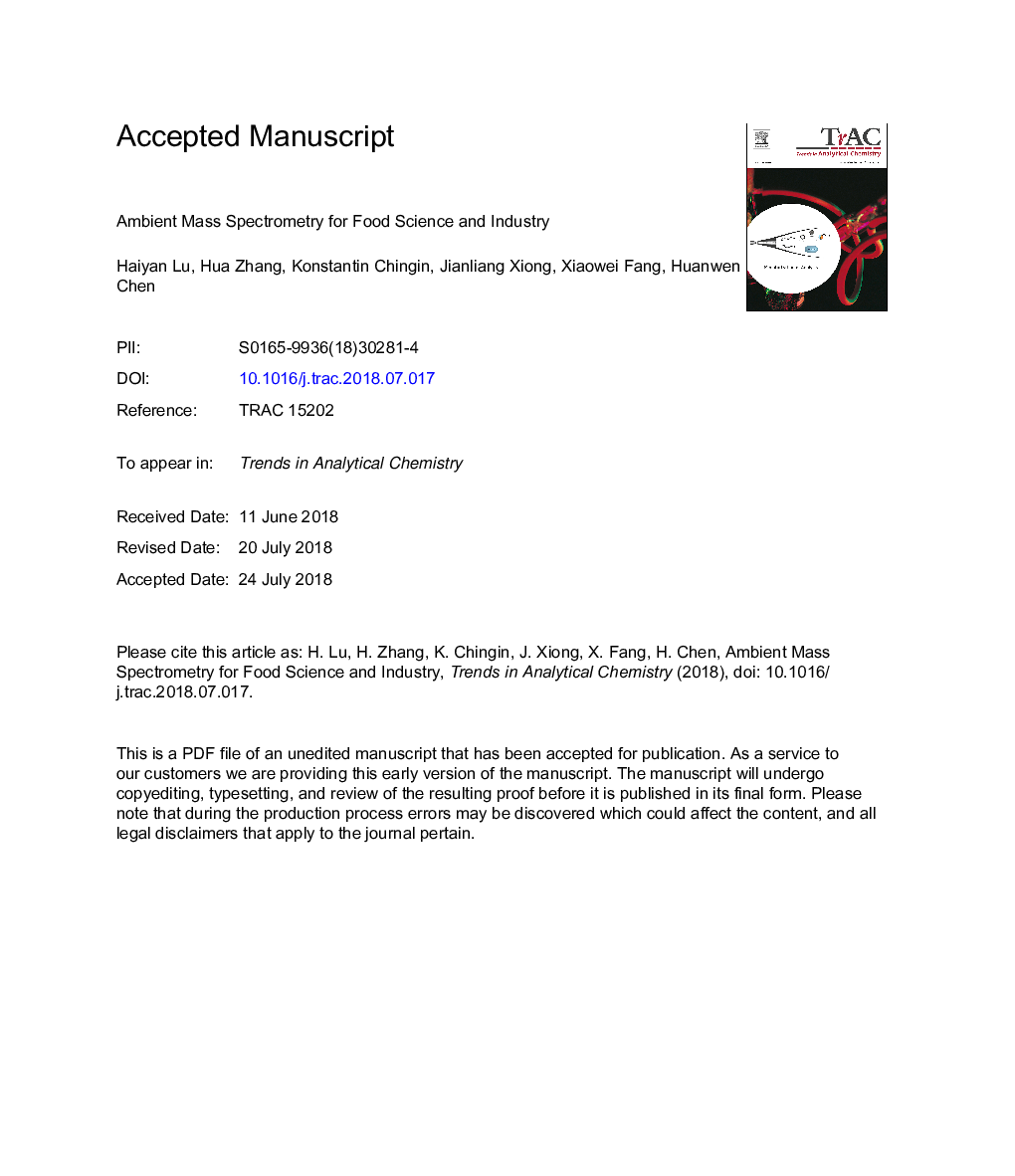| Article ID | Journal | Published Year | Pages | File Type |
|---|---|---|---|---|
| 7687335 | TrAC Trends in Analytical Chemistry | 2018 | 67 Pages |
Abstract
Ambient mass spectrometry (AMS) allows direct molecular characterization of various raw food samples with minimal or no sample pretreatment. Because of the excellent sensitivity and specificity of analysis, AMS has been increasingly applied in food science and industry. In virtually, any type of food samples including solid, liquid, viscous, and bulk food samples could be directly analyzed using mass spectrometry powered by versatile ambient ionization techniques. Moreover, mass spectrometry imaging (MSI) offers a unique opportunity to explore the spatial-chemical information from numerous food samples. Herein, the principle of AMS, typical instrumental setup, and applications in different type of food samples are systematically reviewed, the advantages and shortages of AMS for food analysis are mentioned, and the impact and challenge of AMS on food science are briefly discussed.
Keywords
Related Topics
Physical Sciences and Engineering
Chemistry
Analytical Chemistry
Authors
Haiyan Lu, Hua Zhang, Konstantin Chingin, Jianliang Xiong, Xiaowei Fang, Huanwen Chen,
